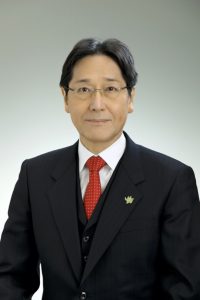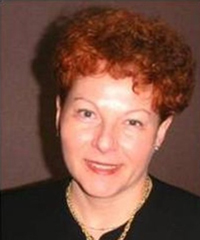
Digital-Twin Fluid Engineering
Prof. Shigeru Obayashi
Institute of Fluid Science, Tohoku University
Experimental/observational research and simulation research are important pillars for R&D. Data assimilation is a research field that connects experiments/observations and simulations and maximizes the use of information from both. Simulations are calculated according to the governing equations and can reproduce detailed phenomena that cannot be obtained by experiments or observations, but there is a gap between actual experiments and observations due to uncertainties in the model and initial boundary conditions. On the other hand, experiments and observations are real data, and while they are trustworthy data extracted from the real world, it is often difficult to prepare a large number of measurement points and to make measurements that are dense in terms of area and space. Data assimilation makes it possible to integrate simulations and experimental/observational data in a statistically appropriate manner, thereby compensating for each other’s deficiencies and achieving better forecasts. Until now, data assimilation has been mainly utilized in the field of meteorology and oceanography, and the know-how to utilize it for engineering design has been limited. In this presentation, applications of data assimilation to fluid engineering will be demonstrated.
Coauthors: Takashi Misaka**, Aiko Yakeno*, Ryota Kikuchi***
*Institute of Fluid Science, Tohoku University
**Industrial Cyber-Physical Systems Research Center, National Institute of AdvancedIndustrial Science and Technology (AIST)
*** Office of Society Academia Collaboration for Innovation, Kyoto University
Biography
Prof. Shigeru Obayashi received B.S. and M.S. degree from University of Tsukuba in 1982 and 1984, respectively. He received Doctor of Engineering from University of Tokyo in 1987.
He worked as a visiting scientist at NASA Ames Research Center from 1987, and then joined the faculty of engineering at Tohoku University as an associate professor in 1994. He is a professor at Institute of Fluid Science, Tohoku University, Sendai, Japan since 2003. He also serves as Director of the Institute from 2014 to 2020. His current research interests include computational fluid dynamics, multidisciplinary design optimization, evolutionary computation, data mining, data assimilation and their real-world applications.
Prof. Obayashi is a member (2020-2026) of Science Council of Japan, the former President (2019) and Fellow of the Japan Society of Fluid Mechanics, the former President (2018) and Fellow of the Japan Society for Aeronautical and Space Sciences, the former President (2015-2016) of the Japanese Society for Evolutionary Computation, Associate Fellow of the American Institute of Aeronautics and Astronautics, and Fellow of the Japan Society of Mechanical Engineer. His awards and honors include 1993 NASA Ames Honor Award, 2012 Computational Mechanics Award, the Japan Society of Mechanical Engineers and 2014 the Commendation for Science and Technology by the Minister of Education, Culture, Sports, Science and Technology.

When AI Meets the Oldest Engineering Discipline
Dr. Renate Fruchter (JSAI2021 Invited Speaker)
Director of the PBL Lab, Civil and Environmental Engineering Department, Stanford University
Builders represent one of the oldest engineering disciplines. Since the dawn of humanity people have built shelters, and then cities and infrastructure. They constantly shape and reshape our built environment and the way we live. We spend 90% of our time in buildings. Buildings consume 73% of U.S. electricity and generate 40% of U.S. greenhouse gas emissions. Building industry contributes a 5%-9% increase in the gross domestic product (GDP). According to UN and World Bank, approx. 56% of the world’s population (4 billion people) resides in urban areas today. By 2030, 2 billion people will have migrated to cities, creating unprecedented pressure on infrastructure and resources, that will impact the environment.
What role can AI play in the building industry as an enabler of a more ecologically, economically, and socially sustainable future built environment?
We will explore scenarios how AI can be an integral part of innovative holistic approaches in the building industry to address challenges such as climate change, globalization, digitalization, and skilled workforce shortage.
We are in the midst of the 4th industrial revolution that is transforming the building industry as well. It is a time when the physical and digital worlds merge; where the world becomes a big data set as everyone and everything that is connected to the Internet becomes data source; where AI, machine learning, VR/AR/MR/XR, robotics, autonomous mobility will continuously reshape how and where we live. Convergence of these emergent technologies can act as exponential accelerators. How will they transform the building industry? How will they empower the knowledge worker to explore broader solution spaces, augment co-creation and collaboration, and make evidence-based, agile, joint decisions? How will they: (1) increase productivity, engagement, well-being, safety, and create digital value chain; (2) replace labor-intensive processes; and (3) reduce cost, schedule, time to market, energy consumption, carbon emission?
Biography
Dr. Renate Fruchter is the founding director of the Project Based Learning Laboratory (PBL Lab). She is a lecturer in the Department of Civil and Environmental Engineering, and Senior Research Engineer thrust leader of “Collaboration Technologies” at the Center for Integrated Facilities Engineering (CIFE), at Stanford University. She received her Civil Engineering Diploma from the Institute for Civil Engineering, Bucharest, Romania. She received her M.Sc. and Ph.D. from the Technion – Israel Institute of Technology. Her R&D focuses on emergent collaboration technologies in support of cross-disciplinary, geographically distributed teamwork in education and corporate settings. Over the years her research team developed and deployed innovative collaboration technologies for virtual team building, synchronous and asynchronous knowledge capture, sharing and re-use, project memory, corporate memory, and mobile solutions for global teamwork and e-Learning. She is a designer of physical and virtual interactive learning and workspaces. She studies the relation between technology-people-place-process. These studies focus on the impact of technology on learning, engagement, knowledge work productivity, emergent work practices and processes, team dynamics, and assessment. She is the developer of the innovative “Architecture, Engineering, Construction (AEC) Global Teamwork” course launched in 1993 engaging university and industry partners worldwide. Her latest projects focus on: (1) big data analytics and visualization towards harmonizing occupant well-being and building sustainable performance; and (2) accelerating creativity and engagement in global teamwork through AI, VR, and parametric modeling optimization.